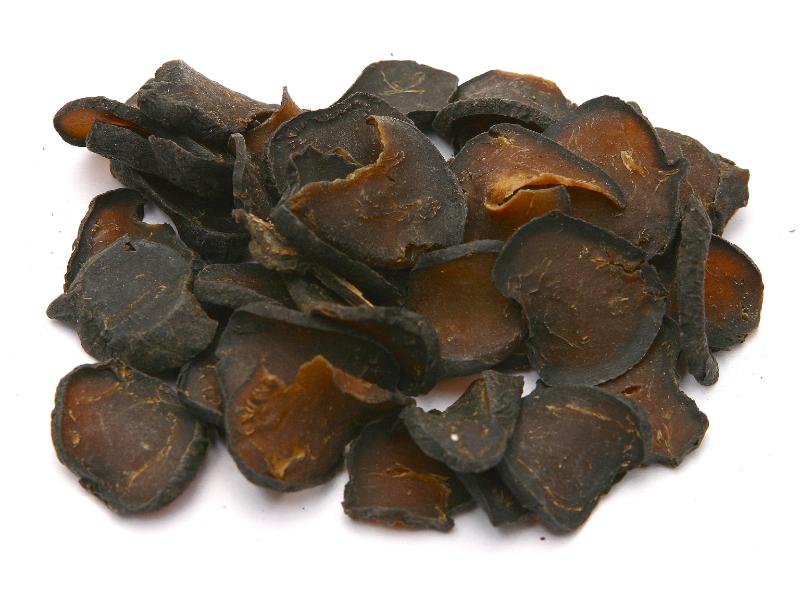Search in medicinals
Aconiti Radix
Aconite main root
川乌 〔川烏〕 chuān wū

Alternate Chinese names: 川乌头 chuān wū tóu
Kingdom: Plant
Origin in PRC Pharmacopoeia: Aconitum carmichaeli Debx. (PRC Pharmacopoeia)
Origin in unofficial sources: Aconitum carmichaeli Debx.*
Use: Medicinal
Category: Interior-warming agents
Properties: Acrid, bitter; hot.
Channel entry: Heart, liver, and spleen channels.
Actions and indications: Similar to Fù zǐ (附子 Aconiti Radix Lateralis Praeparata, aconite [accessory root]) in actions and indications. Chuān wū is the main root of the same plant as fù zǐ (which is the accessory root). It possesses great toxicity. Chuān wū is stronger than fù zǐ for dispersing cold and relieving pain. It dispels wind-damp, disperses cold, and relieves pain, so it is often placed in the Wind-Damp chapter of herbal medicine textbooks. It is used for damp-cold impediment pain, cold pain in the heart region and abdomen, head wind pain, hemilateral headache, and pain from injury from knocks and falls. Chuān wū also reduces swelling and is therefore applied externally for yīn flat-abscesses.
Dosage and method: Oral: 3–9g in decoctions. In formulas using powder or alcohol, the dosage should not exceed 1–2g. The processed form is used for internal application and should be predecocted for 30–60 minutes.
Warnings: Contraindicated in pregnancy. Wū tóu is traditionally said to clash with bàn xià (Pinelliae Rhizoma), guā lóu (Trichosanthis Fructus), chuān bèi mǔ (Fritillariae Cirrhosae Bulbus), zhè bèi mǔ (Fritillariae Thunbergii Bulbus), bái jí (Bletillae Rhizoma), and bái liǎn (Ampelopsis Radix).
Quality: Firm plump tubers that are not hollow are the best.
Production area: Sìchuān and Shǎnxī (Shaanxi).
Back to search result Previous Next